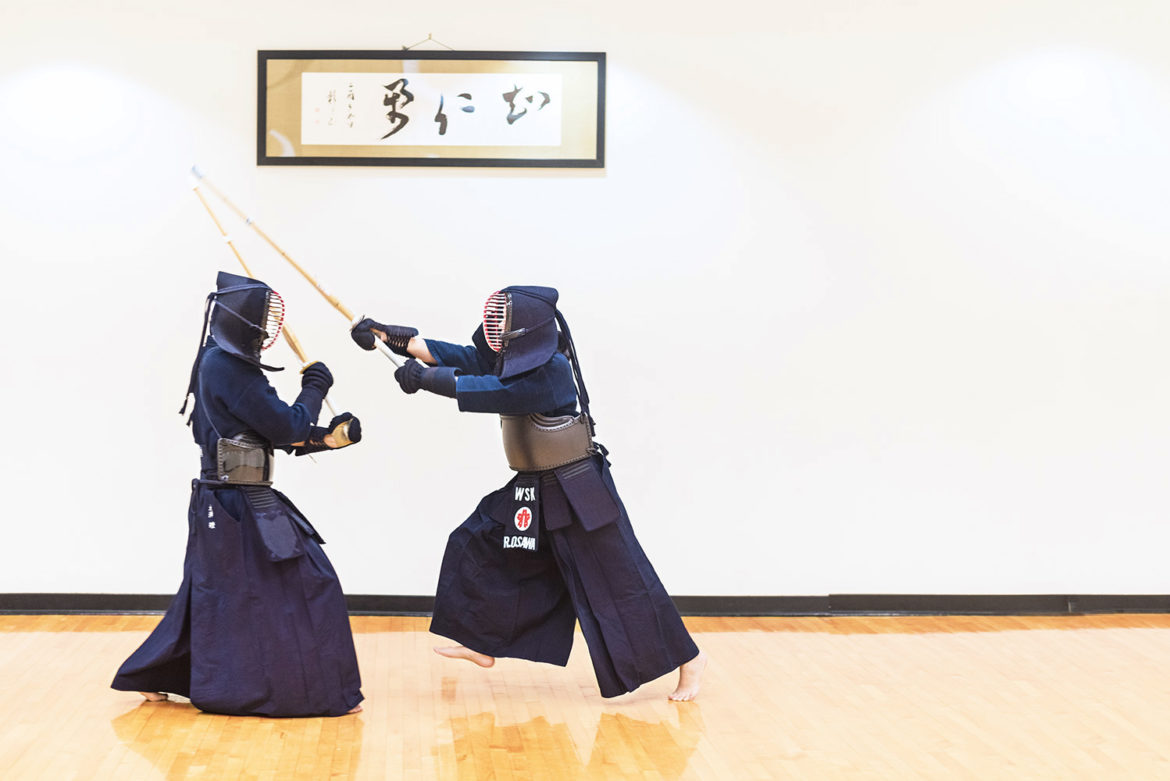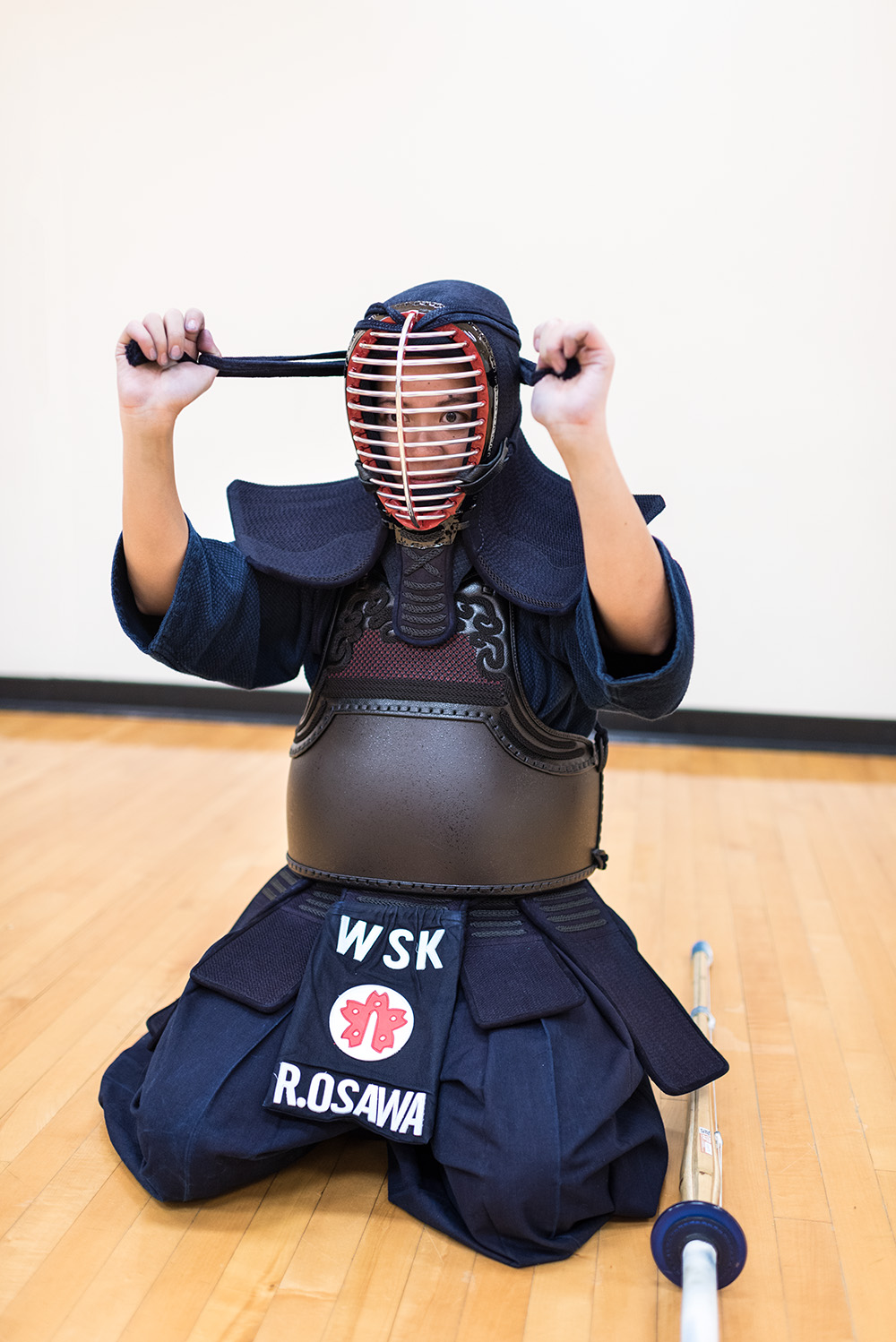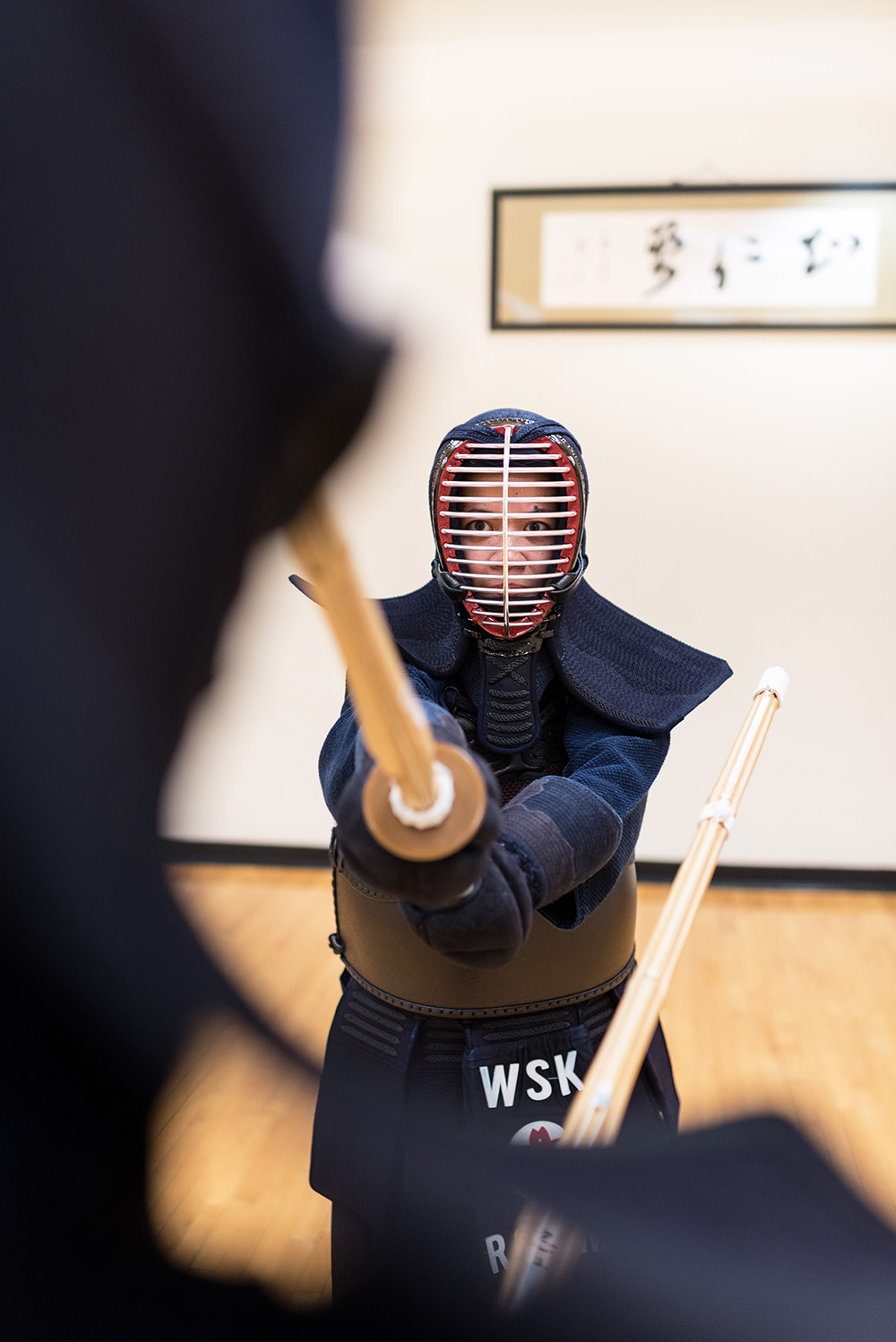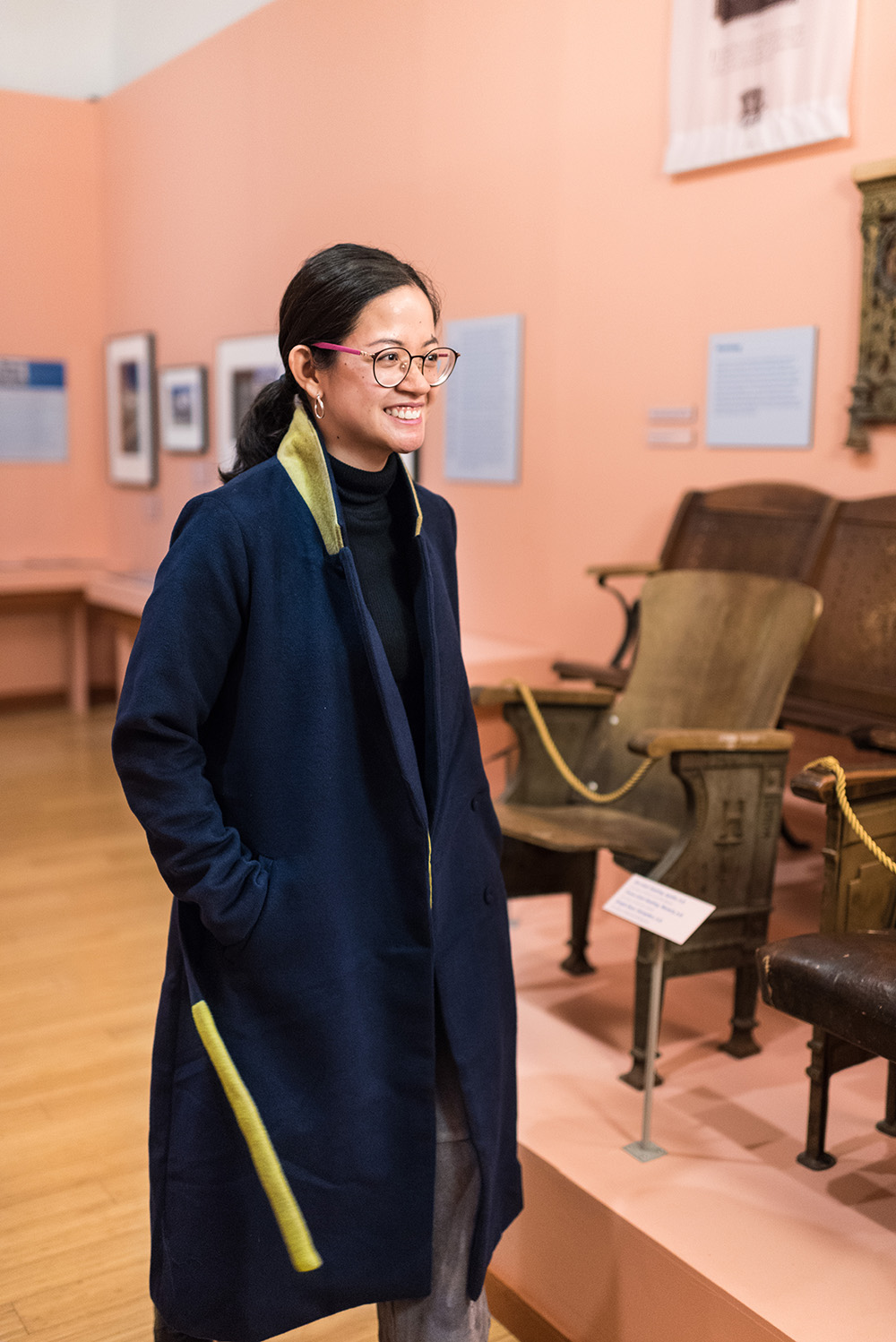
This year for Women’s History Month I am interviewing inspirational women, each with tremendous depth and a unique story to tell. Today we have Rina Alfonso Osawa, the first Filipino woman ever to earn a dan rank (black belt) in the martial art of kendō. She owns and operates Studio Aorta within the Washington, D.C. metro area, designing museum exhibitions. You’ll read about how kendō got her through tough times, the journey in finding her cultural identity, and having the guts to start her own business.
In Conversation with Rina Alfonso Osawa
Laura Wheatley: I have to start by saying congratulations on just earning your yondan (4th degree black belt) rank in kendō earlier this month. Amazing! How do you feel?
Rina Alfonso Osawa: Incredibly empowered, and yet humbled at the same time. As our sensei says, it really takes a village–in this case, I wouldn’t have been able to come this far without the support of everyone in the dojo, and also family and close friends. It’s a good reminder for me to remember everyone who has supported me throughout the years, and also a motivation for me to help others in the dojo improve as well.
LW: So, you’re Filipina, born in Manila. You’ve mentioned growing up with Filipino family values but that you had a more progressive Western education. You also speak Tagalog, Japanese, and English fluently. Did you struggle to find your cultural identity, or have you enjoyed a balance?
RAO: I think I struggled with it at first, since I left home at an age where I was still questioning who I was as a person, and I was an angsty adolescent [laughs]. As I got older though, it was easier for me to understand how these experiences shaped me as a person. When I was 16, I went on a youth exchange program in Japan, and I stayed with a host family for a year while attending a Japanese high school. I changed a lot in that year, and when I got back to Manila afterwards to go to college, I had a little bit of reverse culture shock so I decided to transfer to a college in Japan. College there was an amazing experience, but it also made me realize there was a lot more to learn elsewhere.
After college I moved to the US to go to graduate school, where I’ve been ever since. It was a little bit of a lightning bolt moment for me when I got to the US and found my friends here, because all of a sudden everything made sense. I do feel most like my true self here, and being here makes my past make sense. So to make a long winded answer short, yes I did struggle, but now I’m finding my balance with everything.

LW: I found it absolutely astounding that you were the first Filipino woman to achieve a dan rank (black belt) in kendō. Ever. What was it like during that time for you?
RAO: It was a tough time for a number of reasons, but looking back, I wouldn’t trade it for anything. It was during my high school exchange year–the practice leader of the kendō club was really strict, and Japanese high school kendō club practices are notorious for being difficult physically and mentally. I went through a lot with the people in the kendō club–even falling out with my best friends but eventually managing to get back to a mutual understanding and becoming even more close. Passing the exam just made it all worth it in the end, and it really made me realize how intertwined kendō is in my life.
LW: It’s evident that there is intense focus and dedication involved in the world of martial arts. What would you say is one key distinction with kendō and its ethos that sets it apart from the others?
RAO: I feel like this is one of those questions that kendōka have trouble answering because we basically spend our whole lives trying to figure it out [laughs]. Kendō is really unique because it’s one of the few martial arts that you can practice even into old age. Physical strength matters, yes, but the most important thing in kendō is the mindset you have, and how you use it in your technique. In my experience also, the kendō community throughout the world is really close-knit. Kendō is all about building human character, and that I think translates into how people around the world who practice kendō relate to each other.

LW: I understand that every kendōka (practitioner) has a different style. What’s yours?
RAO: Mine? Fluffy. [Laughs] Or… flowing, I would say. The coach of our regional team when we were training for the All US Nationals said that women’s kendō should be like ballet. My kendō definitely does NOT look like ballet, but I do aspire for it to be more graceful and agile rather than physically aggressive.
LW: [Laughs] I’ve never heard “fluffy” used in that way before. So tell me, what does kendō mean to you?
RAO: It’s so much more than a hobby or sport to me, and really a part of my identity at this point. Kendō to me is like a mirror of life because you have ups and downs and sometimes faltering helps you find opportunities to improve. When I went through the toughest times in my life like when my dad passed away, and when I lost my job, focusing on kendō made me get through the grieving process and demoralization. No matter where I went, as long as I kept doing kendō I felt like I could find my place.

LW: The impact kendō has had on how you navigate life is truly inspiring. When you were laid off, what was it that made you decide to take that leap of faith in starting your own company, Studio Aorta? What would you tell others who are on the fence about taking that leap themselves?
RAO: I made the decision only after I had given myself some time to think about what my true goals were. Since I was in graduate school, I had been thinking about starting my own studio in order to develop my own design practice. I had lost sight of that a little after working for a few places, but when an opportunity arose for me to do a project on my own, I decided it was time to pursue my dream. I didn’t do this all alone though, and sought advice from a few people along the way. I would say to those who are on the fence, give yourself time and space, so you can listen to your gut. Talk to people if you need, but in the end it should be your decision.
LW: Can you tell me a little about the vision of your company, Studio Aorta, and the inspiration behind your desire to work in museums and the arts?
RAO: Growing up, my mom and dad were always keen on exposing me and my siblings to different types of cultures and arts. I also took drawing and painting classes growing up. When I was in college in Japan, I majored in Art History and had to constantly visit museums for school work. I had originally wanted to do more of a curatorial track, but that changed when I discovered exhibition design.
Exhibition design allowed me to merge academics and creative practice, but all in the pursuit of creating memorable, educational experiences. It’s a really specialized field, and sometimes difficult, but it’s extremely rewarding. Studio Aorta’s philosophy – design from the heart – is that intentional, memorable experiences are also aesthetically beautiful, because the designer puts their heart into their work. It might sound a little cheesy, but I really feel like heartfelt, sincere work creates the best experiences.

LW: Projects you’ve worked on in your design career so far include The First Ladies at the Smithsonian National Museum of American History in Washington, D.C., and various exhibitions at the National Civil Rights Museum in Tennessee, among many others. What do you conceptualize when designing the layout of an exhibition to create a flow for the visitor’s experience?
RAO: The most important thing for me is that visitors remember something when they leave the exhibit, or that something in the exhibit affects them in some way. I work closely with the curatorial team to define a set of parameters for overall visitor experience, and then make sure the design communicates the content effectively. If a visitor leaves the exhibit with something in their mind, or feeling a little different than before they visited, then I feel like I’ve done my job properly.
LW: Your most recent project, Flickering Treasures, is currently on view at the National Building Museum in Washington, D.C. through October 14th of this year. Tell me more!
RAO: It’s a photography exhibit about the state of historic theaters in the Baltimore area, primarily about the importance of historic preservation and the effects of development on local architecture history. The main premise of the exhibition is a comparison between the photographs taken by the artist, Amy Davis, and archival photographs of movie theaters in Baltimore.
The artist photographs are of the same location where the movie theaters once were, but it doesn’t take much to see how different they look. Movie theaters have a lot of local architectural and social history embedded into them, and the exhibit explores how these urban landscapes changed over time. In a way it also makes a case for historic preservation and adaptive reuse.

LW: I know that you love to support women in the arts especially – do you feel that there is equal representation for men and women there?
RAO: I feel like the design industry is becoming better when it comes to gender equality, but there is definitely still some work to do before I can say that women have more of an equal stake or that it is no longer a man’s world. If you look at design schools, design firms, or in-house design studios, I can guarantee you that women make up half or more. But it’s only probably been in the last decade where women have made it to the top leadership positions.
Since starting my own practice I do feel like it’s a little difficult for people to take me seriously. I’m a woman, I’m an immigrant, and I’m a millennial. I do my best though to use those facts to my benefit, and thankfully some of my clients have recognized that. I think the design world has some ways to go in terms of being more inclusive in all ways, but thankfully I do feel like more and more diversity is the norm rather than the exception, and most everyone agrees that it’s a good thing.
LW: Lastly, How has your definition of “success” changed over time?
RAO: I feel like I’ve come to view success as the sum of little victories over time. In my career and also in kendō, constant, steady improvement over time accumulates and then eventually becomes something bigger, resulting in a milestone. These milestones then also add up and eventually, all of that becomes a really fulfilled life. Or at least that’s what I’m hoping it will be! I’m definitely not there yet, but I can only hope that putting my heart into doing good, continuous work will count towards this. We’ll see how this goes!
